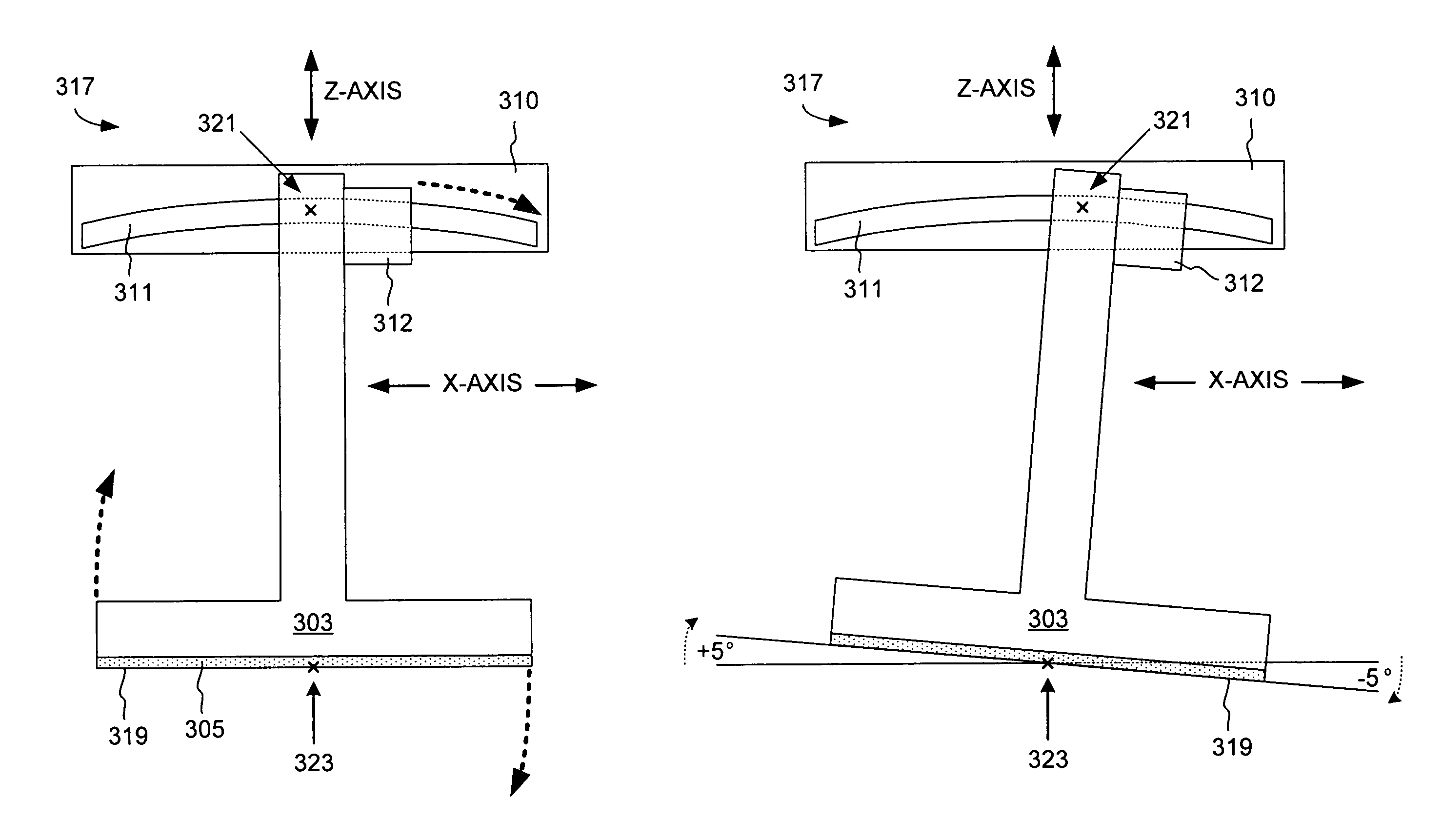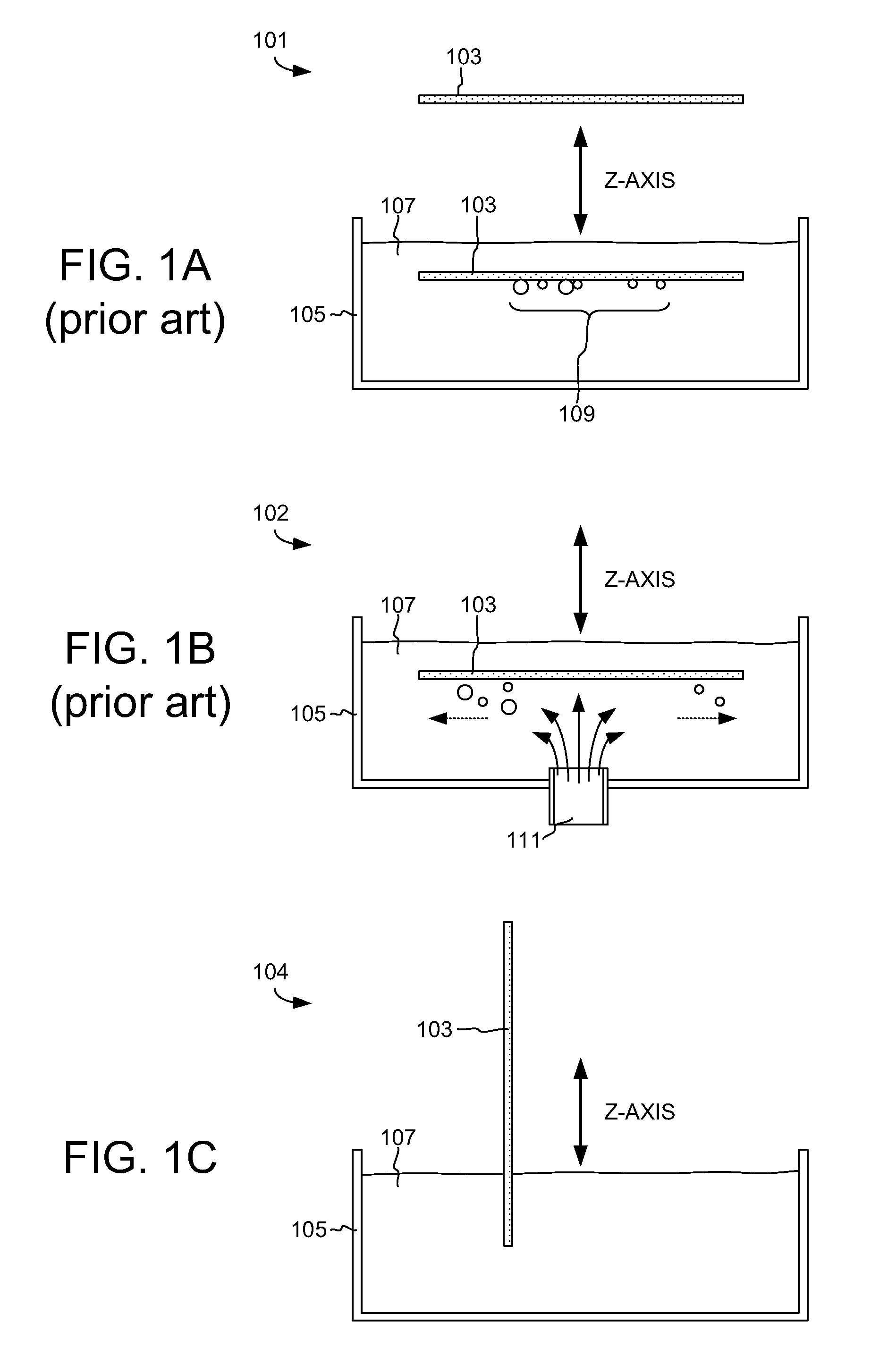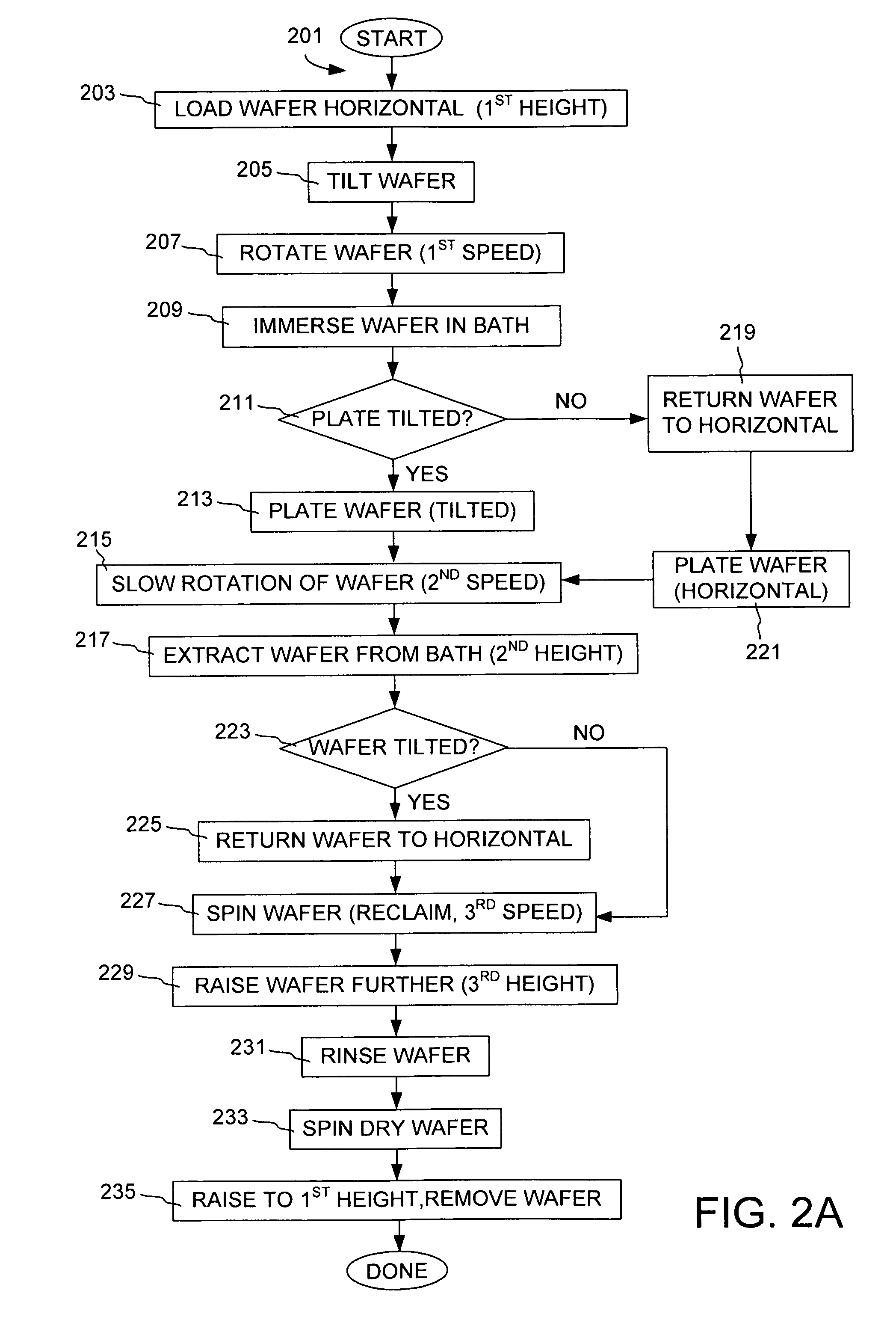Methods and apparatus for controlled-angle wafer positioning
a technology of controlled angle and positioning method, which is applied in the direction of electrolysis components, transportation and packaging, electrolysis processes, etc., can solve the problems of difficult removal from the wafer surface, difficulty in removing metal films from the wafer, and difficulty in gas entrapment and subsequent defect formation
- Summary
- Abstract
- Description
- Claims
- Application Information
AI Technical Summary
Benefits of technology
Problems solved by technology
Method used
Image
Examples
Embodiment Construction
[0035]In the following detailed description of the present invention, a few specific embodiments are set forth in order to provide a thorough understanding of the invention. However, as will be apparent to those skilled in the art, the present invention may be practiced without these specific details or by using alternate elements or processes. In some descriptions herein, well-known processes, procedures, and components have not been described in detail so as not to unnecessarily obscure aspects of the present invention.
[0036]A central aspect of the invention pertains to methods of positioning a wafer relative to a plane defined by the surface of an electrolyte in an electroplating apparatus. Generally, the positioning involves two operations: (1) moving the wafer into or out of the electrolyte along a trajectory substantially normal to the plane defined by the surface of the electrolyte, and (2) adjusting the angle defined by the relative position of a planar plating surface of th...
PUM
| Property | Measurement | Unit |
|---|---|---|
| speed | aaaaa | aaaaa |
| speed | aaaaa | aaaaa |
| angle | aaaaa | aaaaa |
Abstract
Description
Claims
Application Information
 Login to View More
Login to View More - R&D
- Intellectual Property
- Life Sciences
- Materials
- Tech Scout
- Unparalleled Data Quality
- Higher Quality Content
- 60% Fewer Hallucinations
Browse by: Latest US Patents, China's latest patents, Technical Efficacy Thesaurus, Application Domain, Technology Topic, Popular Technical Reports.
© 2025 PatSnap. All rights reserved.Legal|Privacy policy|Modern Slavery Act Transparency Statement|Sitemap|About US| Contact US: help@patsnap.com



